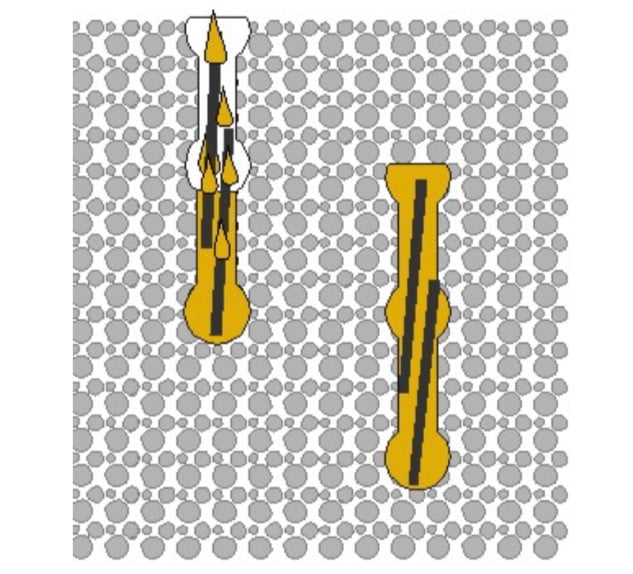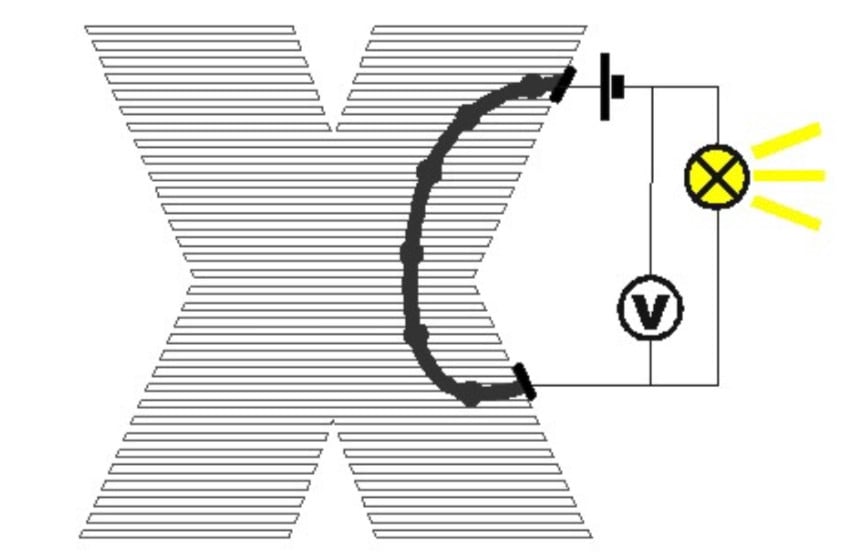FDM is a two-step process: slicing, then printing. First, a digital model must be separated by slicing software into layers. These layers are then fabricated on top of each other to produce the final model. While this method is intuitively and mechanically simple, it does have a huge drawback.
The fabricated objects are more prone to breaking in the direction its layers run. Several publicized tests have been conducted that clearly show this phenomenon, such as Thomas Sanladerer’s Filaween series.
In light of this issue, veteran filament tinkerer Kai Parthy has proposed a solution. No stranger to experiments in filament science, Parthy is the mind behind specialty filament blends Growlay and Laywood. This time, though, he’s offering a more universal innovation.

Multidirectional Reinforcement: Z Anchors
The solution proposed by Parthy is to create vertically-running ‘Z anchors’ throughout the print. These structures run in a different direction than the layers in order to reinforce against layer adhesion weaknesses. The concept is simple, but its proposed implementation adds some exciting possibilities for innovation.

Cavities can be placed throughout the model either by the designer, who knows the structural weaknesses of the design best, or by slicing software that “should be able to perform strength calculations to achieve high strength while using less material”, according to Parthy himself.
After strategic placement, these cavities must be filled to complete the Z anchors, either with filament or resin. In fact, Parthy even suggests that the cavities can house “steel or fiber-reinforced plastic rods prior to resin injection for added strength.”

Parthy suggests that the filament method would involve melting filament at such a temperature that it flows smoothly in order to fill the cavities. This would be easier to implement since it only requires common 3D printer hardware. Either one or two standard FDM nozzles could be used.
In contrast, the resin approach he proposes would involve ‘dispensing pumps’ which are solely responsible for filling cavities. There’s an opportunity that should not be glanced over here.

Reaching Into the Future
Sure, the cavities can be filled with a strong material, but according to Parthy, they can also become pathways that conduct electricity. The ability to embed multi-layered circuit pathways into printed objects – with FDM printers, no less – is exciting. After all, 3D printed embedded electronics are trending in 2019. This could be the technological boost that brings us that much closer to the future we discussed in another dedicated article.
What’s the catch?
Of course, this concept isn’t all rainbows and sprinkles. A chief concern is speed – as we all know, multi-material prints already add time, and also complexity, to the printing process. The addition of Z anchors, which would require different extrusion settings periodically, would cause the same issues as current multi-nozzle or multi-material systems.
At the same time, the added mechanical and programmatic complexity of the machines capable of implementing Parthy’s Z anchor concept leaves more room for error. (Help! The printer dropped a steel rod into the infill instead of a cavity it was supposed to go into.) This might restrict it to higher-end machines, which will make it useful for fewer people.
But perhaps the most obvious limitation is the status of the concept as of now – it’s just a concept. Parthy is currently seeking partners in the industry to help realize this concept, but there are no prototypes that demonstrate even an early-stage implementation just yet. Right now, the idea is just that: an idea.
In Closing
Parthy has proposed a simple solution to a universal problem faced by FDM machines. It’s an elegant concept that could potentially improve to existing processes, but also spawn further innovations, particularly in embedded electronics. As a consumer, it will be exciting to see what names, old or new, jump on the Z anchor-bandwagon and make Kai Parthy’s dream a reality that we can all enjoy.
(Images and source: Kai Parthy)
License: The text of "FDM 2.0: Reinforced Layer Adhesion with Kai Parthy" by All3DP is licensed under a Creative Commons Attribution 4.0 International License.